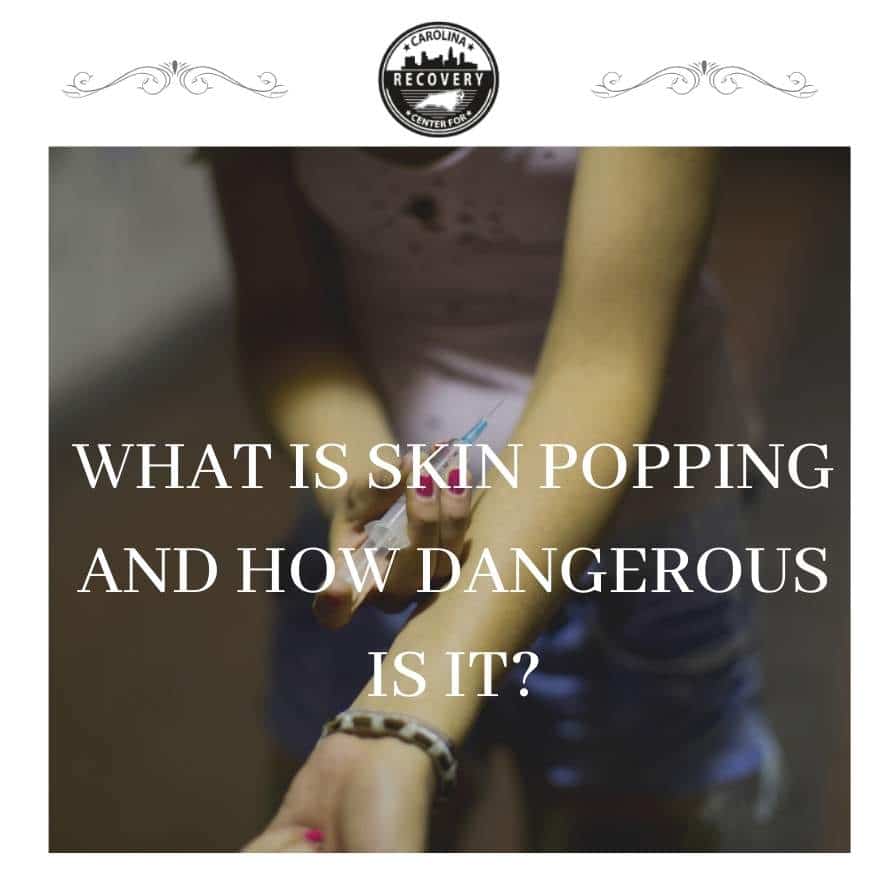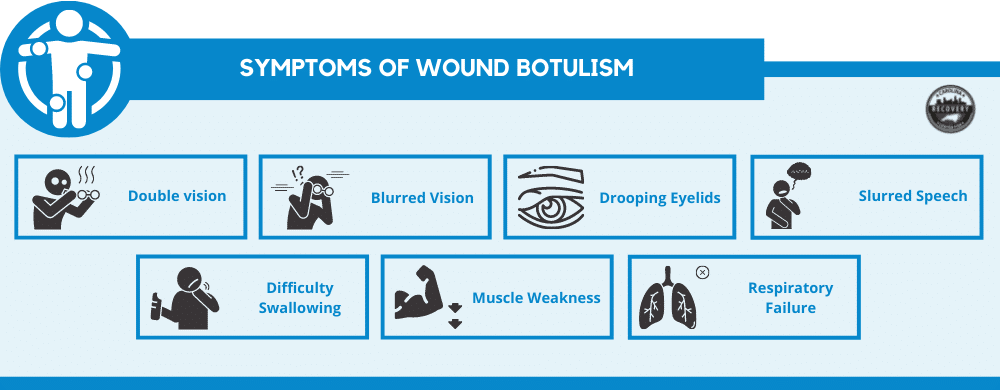What Is Skin Popping and How Dangerous Is It?

Medically Verified: 2/1/24
Medical Reviewer
Chief Editor

All of the information on this page has been reviewed and verified by a certified addiction professional.
Cocaine, heroin, steroids, and opioids can be administered in a number of different ways. Many people have heard of some of the most popular – smoking, snorting, and intravenous injecting. However, there is another method by which some people inject drugs into their system, either subcutaneously or intramuscularly. This method is often referred to as “skin popping.”
What is Skin Popping?
When many people think of IV drug use or shooting up drugs, they think of people who inject drugs into their veins. However, there are some alternative ways to inject drugs, as well.
Skin popping is another term for intradermal or subcutaneous injection. The prefix “sub” translates to “under” or “beneath” and “cutaneous” is a term related to the skin, literally meaning an injection under the skin. Intradermal injection, on the other hand, refers to injecting a drug between the skin and the fat – just below the surface of the skin. Subcutaneous injections are administered under the skin layers while intradermal refers to injecting directly into the skin layer.
Even though subcutaneous and intradermal injections are two different practices, “skin popping drugs” can refer to either technique. Both are equally as dangerous as they can lead to substance addiction, severe infections like wound botulism, and even death.
When a drug is injected into or under the skin, it absorbs into the bloodstream at a slower rate than intravenous injections do (injections that administer drugs directly into the bloodstream via a vein.) However, this method of drug use may cause the effects of a substance to occur faster and last longer than intravenous drug use does.[1][2]
Why Drug Users Turn to Skin Popping
There are many ways to use drugs. Between smoking, snorting, swallowing, and injecting, it may be difficult to understand why some people would choose to deposit substances directly into or under their skin. Still, there are a number of different reasons why people do this.
One of the most common reasons for intradermal or intramuscular use of drugs like heroin is because long-term drug users may damage their veins so much to the point where it is difficult and time-consuming to find a vein. Some may even have hardened or scarred most of their veins, making their primary veins inaccessible.
If the person is going into drug withdrawal, they may get extremely frustrated with trying to locate a vein and decide that it is better to give up and settle for injecting the drug into their body anywhere they can.
Others will use this method of administration because they want the substance they are using to absorb more slowly, and, therefore, remain in their system longer and produce a longer-lasting high. With that said, skin popping does not produce the same rush that IV drug use does, so some drug users will only use this method as a last resort.
Lastly, it’s important to remember that the majority of IV drug users aren’t doctors or nurses and do not have the medical clearance to be injecting substances into a body, whether it is legal or not. These individuals may use poor techniques that cause them to miss their veins completely, accidentally injecting their drugs directly into their skin.
Commonly Injected Drugs
Any drug that can be dissolved and injected into the bloodstream can also be transdermally or subcutaneously injected. With that said, the most commonly abused drugs that are used this way include:
- Heroin – heroin is an opioid that is far more addictive when injected than when smoked or snorted. The only difference between intravenous administration and skin popping heroin is that the first produces an instant high and the latter produces a high within about 5-15 minutes. It is still possible to overdose on heroin even if a person injects it into their skin or muscle.
- Other opiates such as fentanyl, oxycodone, morphine, and Dilaudid – some of these medications may contain fillers that are not meant for injection. This can lead to further irritation, scarring, or even infection. Injecting opiates into the skin or muscle produces similar effects as heroin does.
- Cocaine – cocaine can be administered in a number of different ways. The only difference is the amount of time it takes the drug to be absorbed into the bloodstream and produce effects. Injecting cocaine will speed up this process and intensify the effects, making it more addictive.
- Anabolic steroids – steroids are the most commonly used drug via intradermal or intramuscular injection because many of them are designed for this purpose. However, many people will purchase these illegally and abuse them, leading to skin irritation, abscesses, scarring, lesions, and possible infection.
Many people who skin-pop mistakenly believe that doing so is safer and less addictive than intravenous injection. While the high produced by skin popping may not be as intense, abusing drugs in any way is addictive and dangerous.
The Dangers of Skin Popping Drugs
When a person repeatedly injects a substance into their vein, the vein will become scarred and hardened. It may even lose blood flow completely. Similar damage will occur to the skin around where a person is injecting drugs under their skin.
As a person’s drug use progresses and they continue to shoot drugs into their skin, they will develop scars, lesions, and abscesses. These wounds can become infected and lead to additional problems and injecting drugs may produce scars and discoloration for life.
Another concern when it comes to skin popping drugs is that doing so allows germs and bacteria to build up and fester inside the muscle, fat, and/or skin. These bacteria can lead to serious infections, including:
- Wound botulism
- Tetanus
- Necrotizing fasciitis
Wound Botulism
Wound botulism is a serious illness that can occur as a result of a germ called Clostridium botulinum. This germ gets into wounds and produces a toxin. This botulinum toxin then attacks the body’s nerves making it hard to breathe.
Symptoms of wound botulism include:

- Double vision
- Blurred vision
- Drooping eyelids
- Slurred speech
- Difficulty swallowing
- Muscle weakness
- Respiratory failure
If left untreated, this condition can lead to paralysis and even death.
Skin popping heroin, specifically black tar heroin, is closely linked to the development of wound botulism.[3] This condition is particularly concerning because many of the symptoms mirror those of opioid intoxication or overdose, such as slurred speech, weakness, and slowed breathing, so it may go undetected until it has progressed.
Tetanus
Tetanus is an infection that is caused by Clostridium tetani, a bacteria that invades the body, produces toxins, and causes painful and uncontrollable muscle contractions. This condition is often referred to as “lockjaw” because it can make a person’s mouth and jaw lock up, making it difficult to swallow.
While tetanus is entirely preventable if people get vaccinated, many drug users neglect their health and fall behind on their vaccines, making them increasingly susceptible to illnesses such as these. One study released by the CDC found that 55% of their yearly tetanus cases occurred among injection drug users.[4]
Necrotizing fasciitis
Necrotizing fasciitis is commonly known as the “flesh-eating disease” because the bacteria that causes it spreads quickly and kills parts of the body’s soft tissue. This is caused by group A strep bacteria.
Symptoms include:[5]
- Red or swollen area of skin that spreads rapidly
- Severe pain, even beyond the irritated area
- Fever
- Ulcers, blisters, and black spots
- Color changes on the skin
- Pus coming from the infected area
- Dizziness and/or fatigue
If left untreated, necrotizing fasciitis can progress into sepsis, shock, and total organ failure, making it an extremely deadly condition. Even those who survive may sustain life-long complications.
Find Addiction Help Today
If you or someone you know has been using drugs, whether intravenously, subcutaneously, or in any other form, it’s time to seek help. Skin popping drugs is dangerous and potentially life-threatening – and so is addiction.
At Carolina Center for Recovery, we offer a full continuum of care beginning with detox and ending with outpatient. This way you can obtain the medical and clinical care you need to recover and get healthy.
Call now to speak to a dedicated addiction treatment provider.
References:

